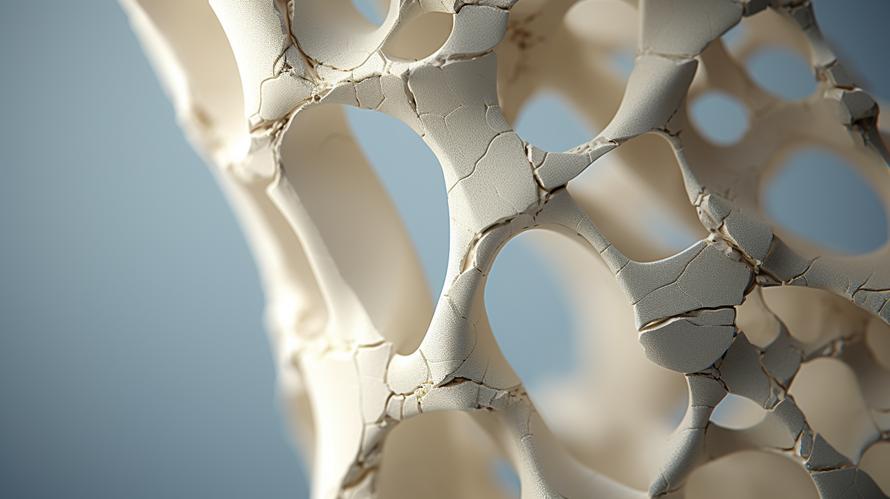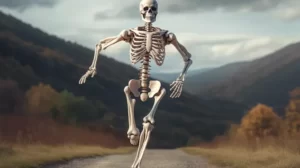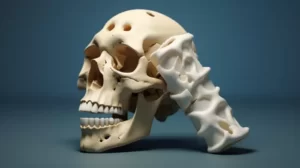Did you know that a shocking one in three women over the age of 50 will suffer a broken bone due to a fragile skeleton? For men, the numbers are still high – one in five men over 50 will experience one of these fractures. With such high statistics, it’s clear that broken bones from osteoporosis have become a global epidemic.
While scientists are still trying to understand why some groups have weaker bones than others, they have at least identified the countries at the highest risk for hip fractures due to osteoporosis. According to research by the International Osteoporosis Foundation (IOF), people in North Western and Central Europe are at the highest risk for broken hips due to bone deterioration. Within the United States, Caucasian women are at high risk while Hispanic, Asian, and black women are at a significantly lower risk. The two countries with the highest risk are Denmark and Norway.
Osteoporotic fractures occur mostly in women, and the economic and physical toll is massive. In the U.S. alone, medical costs linked to osteoporosis reach over $17 billion a year. Considering these staggering facts, it’s essential to understand the causes of osteoporosis, how to identify it, and what measures can be taken to prevent it.
Identifying Osteoporosis
Osteoporosis is characterized by a loss of bone strength, leading to an increased risk of fractures. In the early stages of osteoporosis, there may be no obvious symptoms. This is why the condition has often been called a “silent disease.” However, as the disease progresses, signs may include:
- A loss of height due to compression fractures in the spine
- A stooped posture (known as kyphosis)
- Back pain due to fractures
- Easily occurring fractures after minor injuries or falls
To diagnose osteoporosis, doctors use a bone mineral density (BMD) test. This test uses low doses of X-rays to measure the amount of minerals in your bones. If your BMD is low, it indicates that your bones are less dense and more prone to fractures.
Causes of Osteoporosis
There are several factors that can contribute to the development of osteoporosis. Some of these factors can be controlled, while others cannot. The main contributing factors are:
- Age: As we age, our bones naturally lose density and become weaker. This process starts to accelerate after the age of 50.
- Gender: Women are more likely to develop osteoporosis than men. This is mainly due to hormonal changes (such as menopause) that affect bone density.
- Genetics: If your parents or siblings have had osteoporosis or fractures, this could increase your risk of developing the condition.
- Lifestyle factors: A lack of exercise, poor diet (low in calcium and vitamin D), smoking, and excessive alcohol consumption can all contribute to bone loss and an increased risk of osteoporosis.
Preventing Osteoporosis
Although some factors are beyond your control, there are several ways in which you can help protect your bones and reduce your risk of developing osteoporosis. These include:
- A balanced diet: Consuming adequate amounts of calcium and vitamin D is essential for maintaining healthy bones. Good sources of calcium include dairy products, leafy green vegetables, and fish with edible bones (such as sardines and salmon). Vitamin D is primarily obtained through sun exposure, but it can also be found in small amounts in oily fish, egg yolks, and fortified foods (such as breakfast cereals).
- Regular exercise: Weight-bearing and muscle-strengthening exercises are particularly beneficial for bone health. Walking, jogging, dancing, and lifting weights can all help to increase bone density and reduce the risk of osteoporosis.
- Quitting smoking and reducing alcohol consumption: Both smoking and excessive alcohol intake have been shown to cause bone loss. By quitting smoking and moderating alcohol intake, you can help to protect your bones and reduce your risk of osteoporosis.
- Bone density screenings: Regular BMD tests can help to identify any early signs of bone loss. If you are at risk of developing osteoporosis, your doctor may recommend BMD tests as part of your routine health screenings.
Treatment options
If you have already been diagnosed with osteoporosis, there are several treatment options available:
- Medication: Various medications are available for the treatment of osteoporosis. These drugs work to slow down bone loss or promote the growth of new bone.
- Hormone replacement therapy (HRT): For women, HRT can help to maintain bone density by replacing the estrogen that is lost during menopause. However, HRT carries some potential risks, so it’s essential to discuss this option with your doctor.
- Lifestyle changes: In addition to the above prevention strategies, your doctor may recommend other lifestyle changes, such as improving your posture or using assistive devices (e.g., walking aids) to reduce the risk of falls and fractures.
Osteoporosis is a widespread health issue that affects millions of people worldwide. By understanding its causes, identifying early signs, and taking preventive measures, you can help to protect your bones and reduce your risk of developing this debilitating condition.



